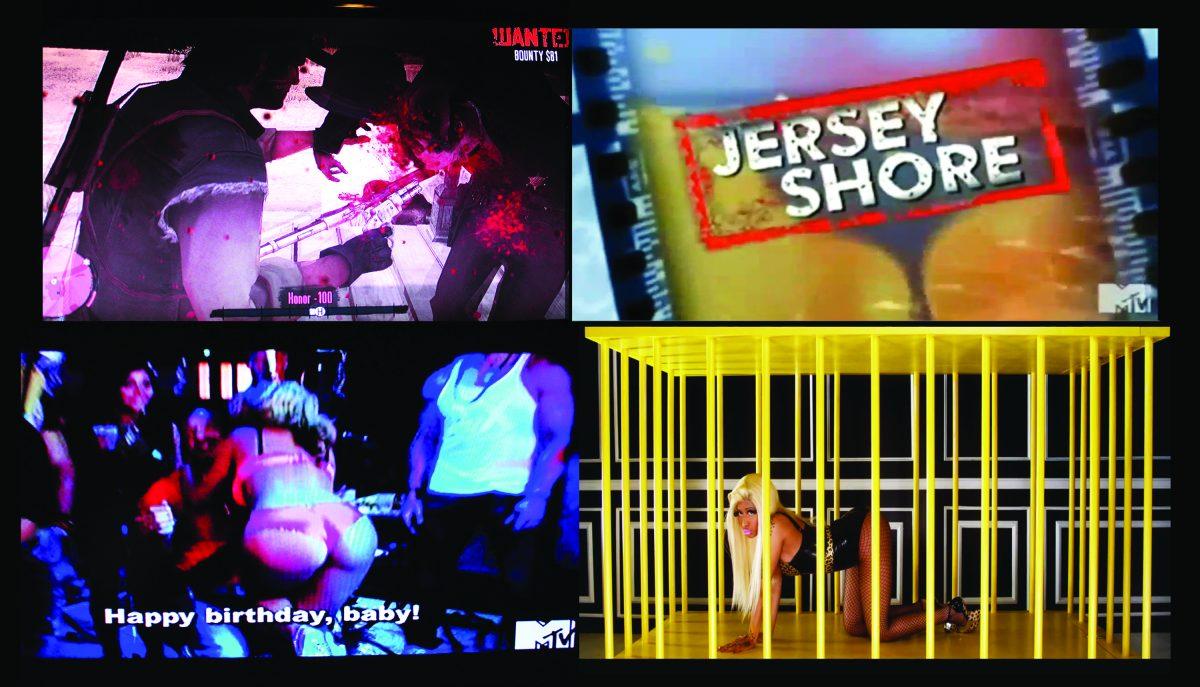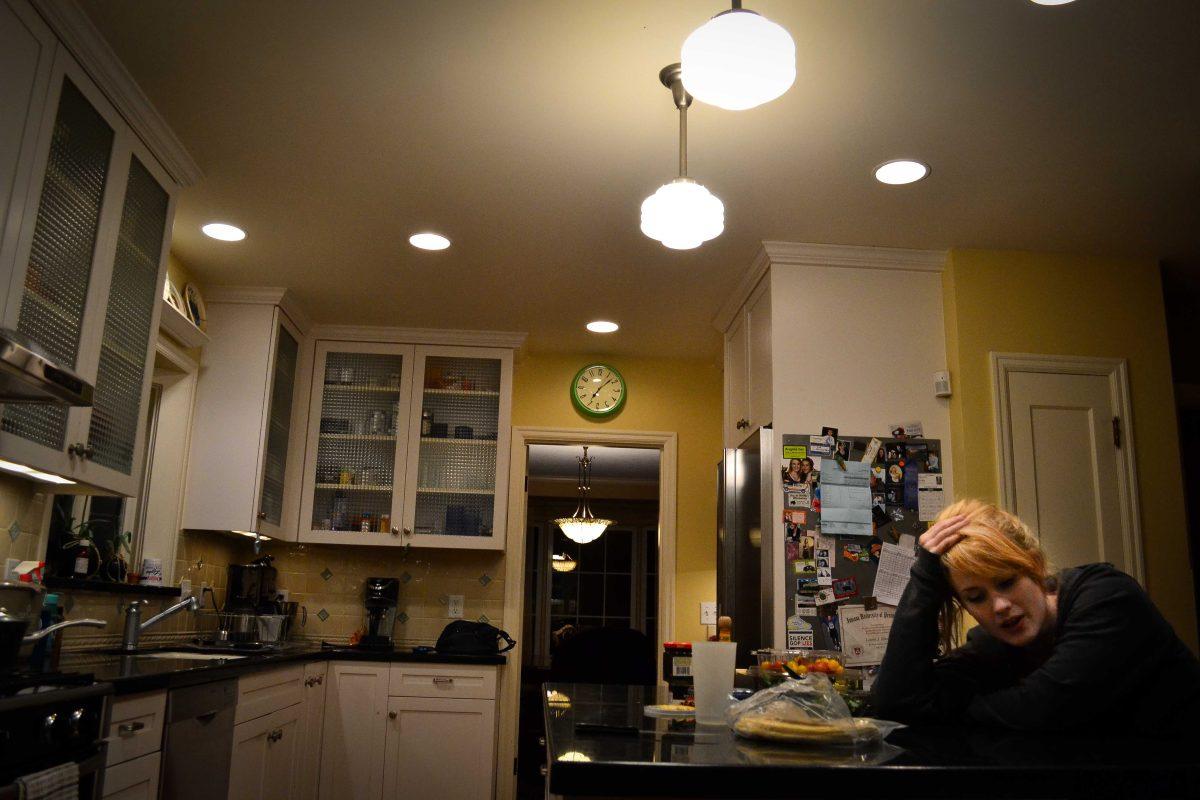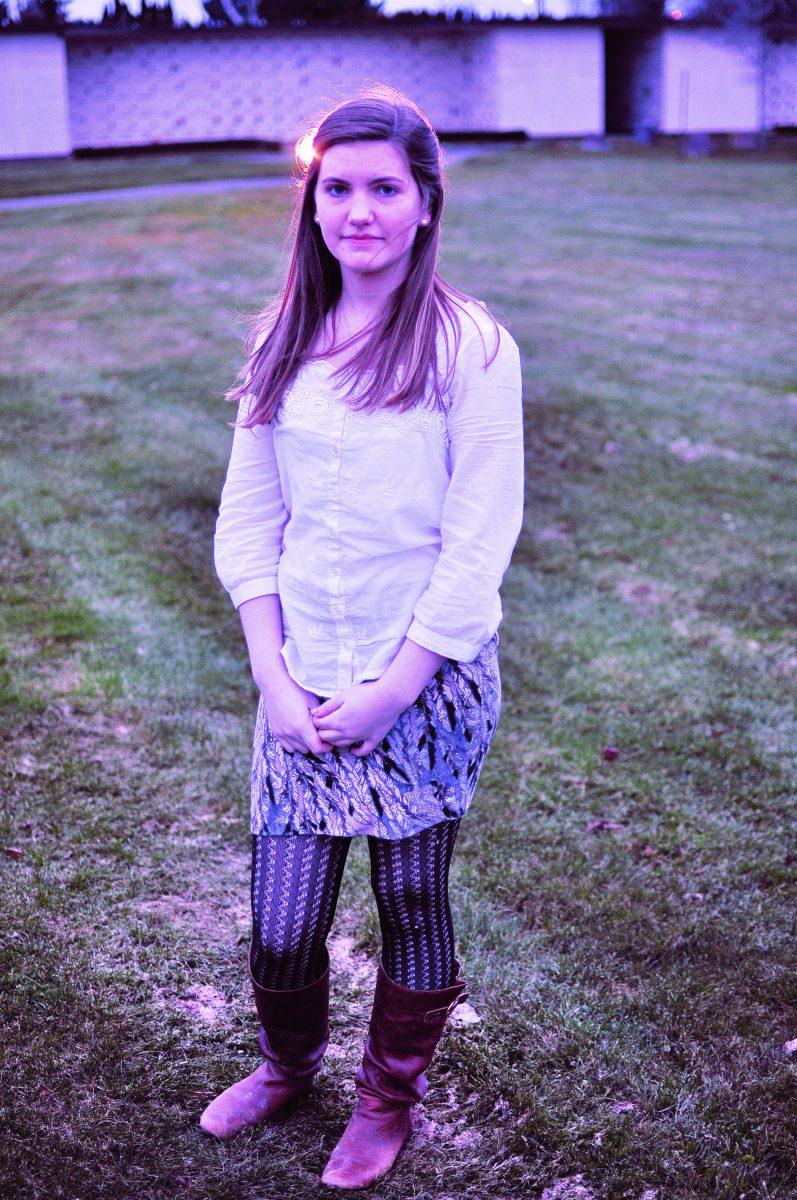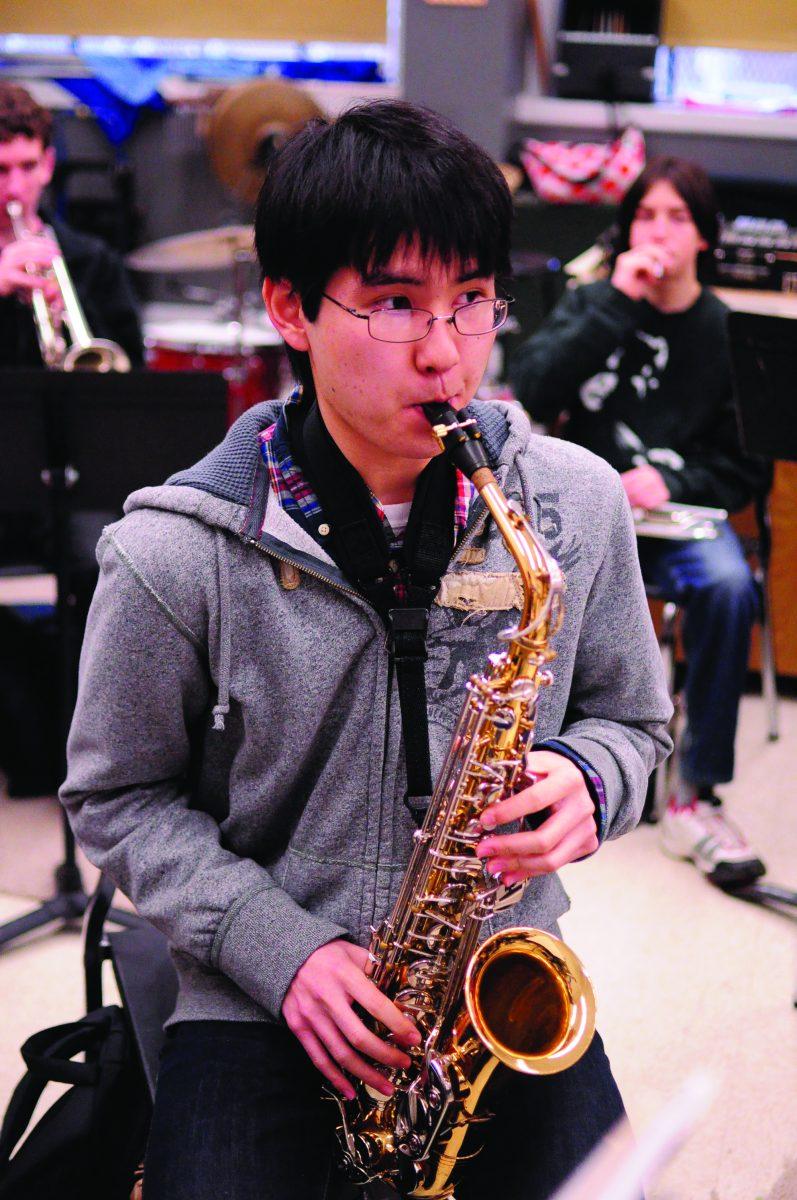Every week, Grant High School senior Sophie Montgomery curls up in her Snuggie with hot Chai tea and watches “Real World,” her favorite reality TV show. “The drama is entertaining,” she says.
Junior Tyler Burlingame remembers back to his first year in high school when he put homework on the backburner to play video games like “Modern Warfare” and “Oblivion” from the time he got home until he went to bed.
For senior Hannah Neal, watching episodes of “Gossip Girl” became like a religion. “Gossip Girl is exciting and different from my life and Grant,” she says. “It’s more extreme, and that’s why I like it.”
It’s an obvious understatement that pop culture is gripping the attention span of young people today more than ever. Raunchiness, violence and risky behavior have become the norm for teens, blurring the line that separates the acceptable from the unacceptable.
As Grant grapples with the recent attack of two junior varsity basketball players by four of their teammates and the fallout that ensued, administrators, teachers, parents, some students and others are questioning whether enough is being done to reel in bad behavior. What role, if any, do adults play in the equation when it comes to bullying, hazing and other behavior that puts students at risk?
“As adults, we need to take responsibility for something that has broken down,” says Principal Vivian Orlen. “Coaches need to really drive home what’s acceptable and what’s unacceptable, and be raising these questions and talking about them with students.”
Dr. Ellen deLara, a professor at the Syracuse University School of Social Work, says some people see pop culture as harmless, but its influences are real.
“Viewing violence and other forms of mistreating one another has a desensitizing impact on today’s kids,” says deLara, who specializes in human development and family studies, and has written extensively on adolescent development. She adds that as kids are watching, they “are learning all the time.”
Given the series of events – the locker room attack, allegations that some students on sports teams or in gym classes physically or sexually assaulted fellow students, and that a number of students say they’d heard about it but never came forward – it’s no wonder that people are sounding the alarm.
And pop culture is one of the main targets.
Rosemary Schwimmer is the Prevention Education Coordinator at the Parenting for Prevention program within Oregon Partnership, a crisis center that combats substance abuse, depression and suicide. She’s also the parent of three kids, and knows that monitoring them 24/7 is difficult.
“It’s the responsibility of parents to monitor what kids see and discuss some of the issues that are raised by television behavior,” she says.
Grant parent Peter Grover disagrees. He has a junior at Grant and an eighth grader planning to attend next year. They watch plenty of TV but get good grades and display good behavior at school and home, Grover says. He believes most kids understand that shows portraying bad behavior like “South Park” are “intentionally politically incorrect.”
“I trust my kids to be intelligent consumers of media in general until they prove otherwise,” he says.
Montgomery’s parents don’t monitor what she watches but say they trust her not to get swayed by unrealistic reality show antics. She likes “Real World” because “it’s supposed to be normal people, but it’s ironic because it’s nothing like real life. There’s sex and alcohol and drama every night.”
How far is that from what students at Grant see? It’s clear, given the history, that sex, alcohol and drama aren’t new phenomenons at our school.
But Montgomery says she can see the difference. “That’s not me,” she says. “I couldn’t deal with all the drama on that show without going crazy.”
When Neal was younger, her parents put her on a tight leash when it came to entertainment. She wasn’t allowed to watch popular shows like “Gossip Girl,” “America’s Next Top Model” or “Parental Control.”
They “pretty much monitored everything I watched based on what they deemed appropriate,” Neal recalls. She “felt it was a big deal that I couldn’t watch the shows that all my friends were watching and talking about at school.”
Today, she says she feels silly that she cared so much. Now that she can watch what she wants, Neal says she sees the reasoning behind her parents’ rules. She believes monitoring what kids watch on TV is appropriate, “as long as it’s not keeping them from real life issues. If it’s sheltering them from the world, it’s bad. But it’s good if it’s keeping kids from something not age appropriate.”
These days, even comedy shows get in the act, sending the message that one person’s demise is another’s joke. Take “America’s Funniest Home Video,” which is directed toward families. DeLara points out that in the show, people are usually getting hurt, with “children getting hurt in particular,” as an audience laughs along.
“Every decade, television has devolved in terms of the amount of violence portrayed and the number of violent acts that a child sees by the time they get to high school,” she adds.
Another influential show on TV is “Jersey Shore,” now in its fifth season. It focuses on a group of crude twenty-somethings who engage in drunken fights, casual sex and out-of-control partying each episode.
Characters on the show go out partying every night, getting in fights at clubs, getting arrested, only to be back on the party scene the next night. In one episode, characters Snooki and JWoww can be seen urinating on the ground upstairs in a club.
What’s scary is how the show and the behavior it portrays has seeped into our everyday lives. The show’s stars are treated like royalty in the entertainment world, complete with paparazzi and late-night television show appearances.
Montgomery says the show is “entertaining because it’s so ridiculous. But I know that their lifestyle is not OK. You have to laugh, because it’s so ridiculous.”
That show and others like it cause another Syracuse University professor to pause. Robert Thompson is the director of the Bleier Center for Television and Popular Culture in the university’s S.I. Newhouse School of Communications.
He says whenever he walks down the main campus streets on a Friday night, it feels like he’s watching a local version of a reality show. It’s not uncommon to see “behavior that is not that far off from ‘Jersey Shore’ behavior,” he says.
“There’s a lot of stuff on television that’s not appropriate for the very young and gets normalized by repetition,” says Thompson.
But he cautions against making the connection that pop culture always illicits a monkey-see, monkey-do reaction from youth. There is a big difference between making lifestyle choices that impact only one person and imitating inappropriate behavior or violence that affects others, he says. “There would be a lot of questions I would ask before I asked what they watched on TV,” Thompson says. “When people go out and do really bad things, it’s a combination of a complex number of things, of which media might be a part.”
It’s true that every generation has shows to identify with. Adults always reminisce about the television content of their day. Grover remembers growing up in the 1970s and watching shows like “The Brady Bunch” and “The Partridge Family.”
“Everything was pretty wholesome,” Grover recalls.
Still, what was cool ruled in the minds of most teenagers. The week after the hit character, Fonzi, from the show “Happy Days” got a library card, the American Library Association reported a huge spike in library card applications. In the 1990s, Rachel – Jennifer Aniston’s character from the hit show, “Friends,” got a haircut and within days thousands of young women wanted to get the stylish bob.
Montgomery says the ability to differentiate between acceptable and unacceptable behavior on TV comes with maturity. “I know it’s not the right thing to do, but younger kids don’t know that,” she says, adding that some kids “have a hard time realizing that pop culture is greatly exaggerated. When you’re immature, you think that stuff is cool.”
Thompson says allowing young, impressionable children unlimited Internet and television access is where things can go wrong. “If you’re seeing a lot of violent stuff and you’re not being well parented and you may not have picked up a lot of good values, that’s when you have problems,” he says. The problems come “when all of that stuff combines together.”
Schwimmer says she’s surprised at the “mean spirited” material shown on TV today. She says “even Disney shows show kids being completely disrespectful and pulling extremely ridiculous shenanigans.” Although people know what they are watching is ridiculous, “it desensitizes them to the point that the show has to be more and more outrageous to get the same reaction,” she says.
Schwimmer recognizes it’s getting harder and harder for parents to regulate what their children watch. She notes that she struggles to monitor her 13-year-old daughter much more than her older kids five years ago. Most families had one computer that could be located in a central area, which allowed for parents to monitor their child’s computer activity.
Now, most kids have Smart phones and can log onto the Internet out of sight of adults. The easy access can cause problems because young kids “can’t wait to be a teenager and aspire to be the cool ones that they see on TV,” says Schwimmer, who encourages adults to talk to their kids regularly about what’s OK and what’s not.
The exposure to pop culture does have an alarming side effect that many don’t consider: failure to foresee and comprehend consequences usually comes after the fact.
Syracuse University’s deLara points out that adolescents already “don’t have a very good idea of long-term outcome. (They) have taken a lot of risks and they’re not calibrated to understand what the consequences are.”
Video games contain reset buttons that allow players to restart their game after a mistake. In some ways, it creates a culture of acting without thinking, then scrambling to take back and smooth over serious mistakes when the potential consequences become clear.
Video gamer Burlingame doesn’t buy it. “I may be used to seeing the violence that comes with video games,” he says. But “this does not make me feel anymore likely to start killing people. Just because I play video games does not change my morality and how I feel about death.”
In some cases, he says, video games have helped him “see and understand the importance of certain actions.”
While Thompson agrees that violent video-game culture depicting beheadings and other forms of violence doesn’t necessarily lead down a path to immorality, it still has an impact on young people in a way that may be tough to alter.
The negative of bombardment with desensitizing media, he says, can skew their view of right and wrong in the moment. “Kids are definitely not thinking, ‘This is going to follow me around for the rest of my life,’” he says.

































